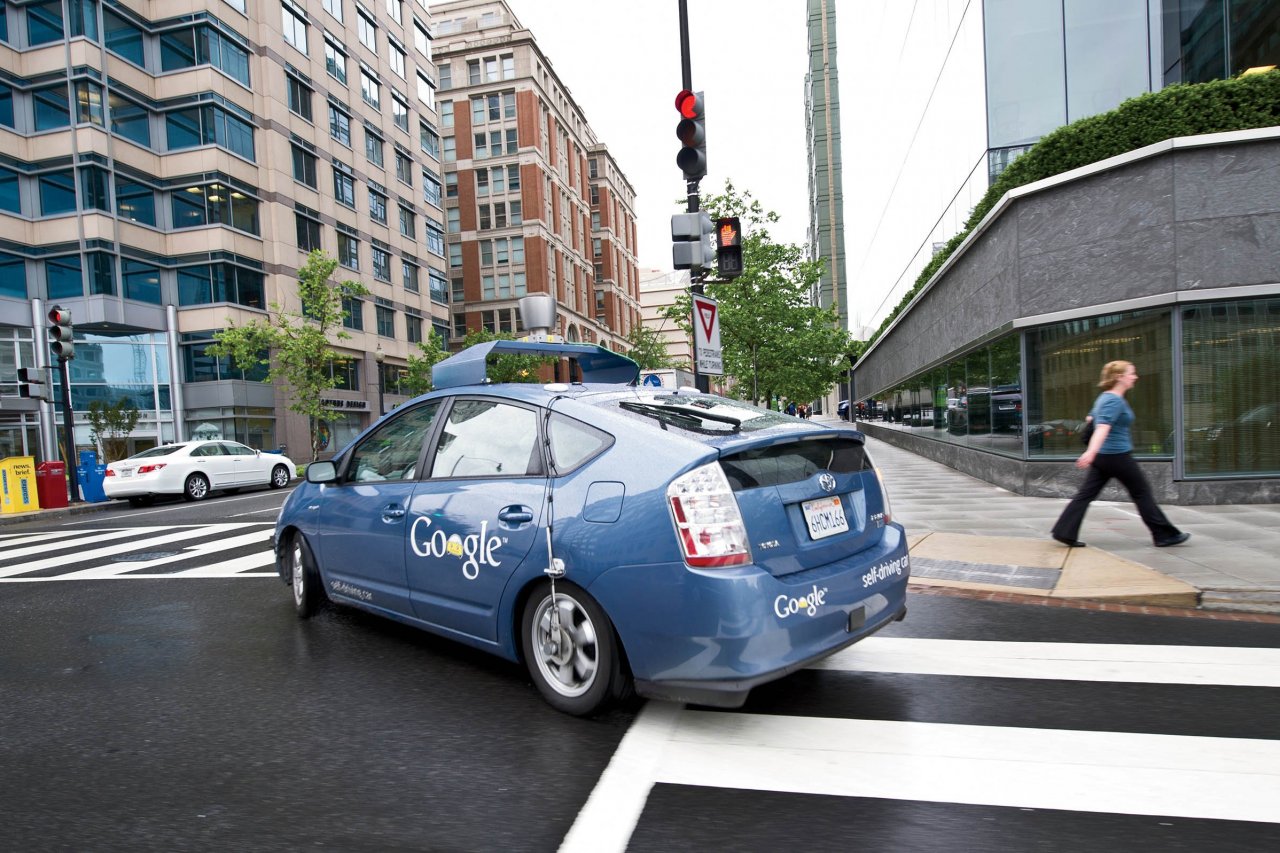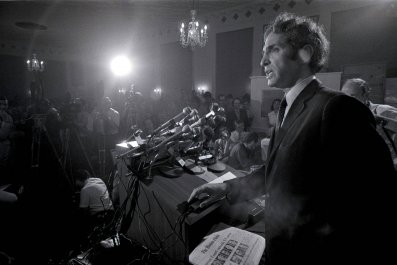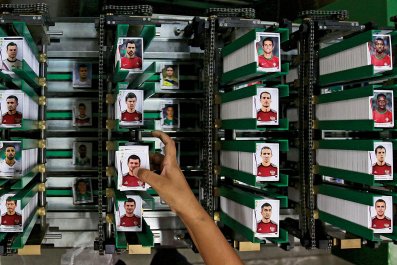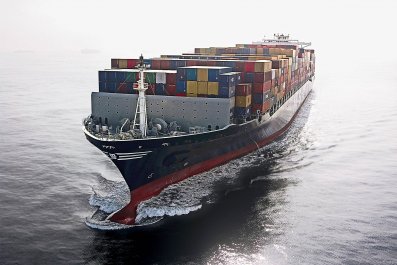Imagine a Thelma and Louise remake, circa 2030. Climax of the movie: Two women sit in a convertible facing the edge of the Grand Canyon. Police surge toward them from behind.
Louise looks at the dashboard. "OK, Google Car—go!"
The car does nothing. The police close in. A disembodied voice chirps from the car speakers, "I'm sorry, it is unsafe to proceed."
"Damn autonomous cars!" Thelma yells as she pulls a revolver and shoots the dashboard.
Self-driving cars have become inevitable. In May, California's Division of Motor Vehicles unveiled its first set of rules for autonomous vehicles. Google says its cars have driven more than 700,000 miles and tests show they can watch for pedestrians and other surprises as well as human drivers. Intel jumped in the other day, announcing its driverless car chip. Progress is coming fast and furious.
When a radical new technology arrives, at first we tend to think of it as a modification of an existing technology. Put a motor on a four-wheel chassis and all you've got is a carriage that doesn't require a horse, right? Television seemed like radio with pictures. Cellphones seemed like telephones that could move around. Yet in each case, the new item opened up possibilities no one expected. Cars led to suburbs and shopping malls. Cellphones became pocket computers that are changing dating, banking, eating and just about everything else.
The first surge of autonomous vehicles probably won't even carry humans. One of the most intense emerging battle zones in retail is same-day, nearly instant delivery—Wal-Mart and other brick-and-mortar retailers think they can fight Amazon by delivering orders from local stores in an hour or two. Amazon fired a shot back by saying it is working on delivery by drones that will land a package on your doorstep.
But the idea of drone delivery is wishful thinking, like a hangover-less bourbon. "The laws of physics still apply," says Paul Saffo of Foresight at Discern Analytics. He doesn't see how drones could ever carry enough packages to make the economics work, not to mention all the other attending problems. Who's liable if the family dog attacks a drone, or when a sudden rain makes drones short out and drop pizzas on unsuspecting pedestrians?
What makes more sense for this upcoming battle? Autonomous vehicles built to drive up to your door with a package or food order and text you to come out and get it. To do that job, the vehicle doesn't have to look like anything we've seen before. Throw out seats or headroom for a human. Make the things electric. Design something unique—maybe a cross between a U-Haul trailer and R2-D2. In a couple of decades, they will be whizzing all over city streets.
At the same time, Western societies are aging. When people get too old, they have to stop driving, and by 2030, more than 20 percent of the U.S. population will be over 65. So we will all welcome a solution that gives the elderly cars that drive themselves.
But why do a one-for-one replacement of regular cars for driverless cars? Robin Chase, founder of Zipcar, imagines a situation more like an on-demand autonomous car subscription service—the offspring of Uber and Zipcar. A fleet of such cars would be stationed all around town. You'd use your phone to call for the nearest one, which would pick you up within five minutes. The service wouldn't take you cross-country, but it certainly would take you across town to the Old Country Buffet.
There's no reason for such vehicles to look anything like today's cars. Most trips will involve taking one person a short distance, so maybe these cars will look like the new three-wheeled one-seater called Elio—minus the steering wheel. These services will change the way we think about personal transportation—instead of something to own, it will be something to subscribe to. Cars will go through the kind of shift music is going through now as it moves to subscription services: We used to own music, whether as LPs, CDs or MP3s, but soon we're just going to rent it.
All told, the most profound impact of autonomous cars and trucks could be the end of the very idea of a car or truck. Driving a car might become like riding a horse: something rich people do for fun on weekends.
Chase believes that if we don't think differently about cars—if we just replace human-driven cars with computer-driven cars—it will turn into a nightmare. Today, cars stay parked on average 95 percent of the time. If everybody comes to own an autonomous car, a lot of people will send them out to run errands—send the car to pick up a kid or go get itself repaired. If that leads to the same number of cars per person and lowers the time an average car stays parked to even 90 percent, traffic would explode. In a subscription model, cars would be shared, vastly lowering the number of cars per person.
A transformation of transportation will have all sorts of consequences. Some will be rough. The job of "driver"—whether of taxis or UPS trucks—could go the way of elevator operators and milkmen. "Paradise by the Dashboard Light" will wind up being a song about a bygone era when you could actually sneak away in a car. Since a subscription car would always know where you are, the privacy of a car will be no more.
If people no longer drive, then driving drunk will become something previous generations used to quaintly worry about. Autonomous cars could do for drinking what birth control pills did for sex.
It has always been a bad idea to put humans in control of 2,000 pounds of metal and glass hurtling down a sliver of pavement at 60 miles per hour. In the U.S. alone, car crashes kill 33,000 people a year and suck $277 billion out of the economy, according to The National Highway Traffic Safety Administration. In a world of autonomous, subscription-based Uber-Zip pod cars, nobody could drive off a cliff. The Thelma & Louise 2030 script would have to turn Brad Pitt into a nerdy coder who helps them override the Google Car programming with their smart earrings.































